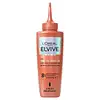Head & Shoulders Derma X Anti Dandruff Scalp Balm Hair Conditioner Versus L'Oreal Elvive Growth Booster Anti-Fall Scalp Serum
What's inside
What's inside
 Key Ingredients
Key Ingredients

 Benefits
Benefits

 Concerns
Concerns

 Ingredients Side-by-side
Ingredients Side-by-side

Water
Skin ConditioningStearyl Alcohol
EmollientCetyl Alcohol
EmollientStearamidopropyl Dimethylamine
EmulsifyingGlutamic Acid
HumectantParfum
MaskingPhenoxyethanol
PreservativeBenzyl Alcohol
PerfumingCitric Acid
BufferingSodium Benzoate
MaskingPiroctone Olamine
PreservativeTocopheryl Acetate
AntioxidantCoumarin
PerfumingHexyl Cinnamal
PerfumingPolysorbate 20
EmulsifyingAloe Barbadensis Leaf Juice
Skin ConditioningLinalool
PerfumingGlycerin
HumectantCocos Nucifera Fruit Juice
EmollientSodium Hyaluronate
HumectantCollagen
MoisturisingWater, Stearyl Alcohol, Cetyl Alcohol, Stearamidopropyl Dimethylamine, Glutamic Acid, Parfum, Phenoxyethanol, Benzyl Alcohol, Citric Acid, Sodium Benzoate, Piroctone Olamine, Tocopheryl Acetate, Coumarin, Hexyl Cinnamal, Polysorbate 20, Aloe Barbadensis Leaf Juice, Linalool, Glycerin, Cocos Nucifera Fruit Juice, Sodium Hyaluronate, Collagen
Water
Skin ConditioningAlcohol Denat.
AntimicrobialNiacinamide
SmoothingPropylene Glycol
HumectantDiaminopyrimidine Oxide
Skin ConditioningLactic Acid
BufferingPEG-40 Hydrogenated Castor Oil
EmulsifyingAminomethyl Propanol
BufferingLimonene
PerfumingZingiber Officinale Root Extract
MaskingBenzyl Alcohol
PerfumingLinalool
PerfumingAcrylates/Beheneth-25 Methacrylate Copolymer
Piroctone Olamine
PreservativeCitral
PerfumingCitronellol
PerfumingHexyl Cinnamal
PerfumingParfum
MaskingWater, Alcohol Denat., Niacinamide, Propylene Glycol, Diaminopyrimidine Oxide, Lactic Acid, PEG-40 Hydrogenated Castor Oil, Aminomethyl Propanol, Limonene, Zingiber Officinale Root Extract, Benzyl Alcohol, Linalool, Acrylates/Beheneth-25 Methacrylate Copolymer, Piroctone Olamine, Citral, Citronellol, Hexyl Cinnamal, Parfum
Ingredients Explained
These ingredients are found in both products.
Ingredients higher up in an ingredient list are typically present in a larger amount.
Benzyl Alcohol is most commonly used as a preservative. It also has a subtle, sweet smell. Small amounts of Benzyl Alcohol is not irritating and safe to use in skincare products. Most Benzyl Alcohol is derived from fruits such as apricots.
Benzyl Alcohol has both antibacterial and antioxidant properties. These properties help lengthen the shelf life of products. Benzyl Alcohol is a solvent and helps dissolve other ingredients. It can also improve the texture and spreadability.
Alcohol comes in many different forms. Different types of alcohol will have different effects on skin. This ingredient is an astringent alcohol.
Using high concentrations of these alcohols are drying on the skin. They may strip away your skin's natural oils and even damage your skin barrier. Astringent alcohols may also irritate skin.
Other types of astringent alcohols include:
According to the National Rosacea Society based in the US, you should be mindful of products with these alcohols in the top half of ingredients.
Any type of sanitizing product will have high amounts of alcohol to help kill bacteria and viruses.
Learn more about Benzyl AlcoholHexyl Cinnamal is a fragrance ingredient with a similar scent to jasmine. It can be naturally found in chamomile essential oil.
This ingredient is a known EU allergen and may sensitize the skin. The EU requires this ingredient to be listed separately on an ingredients list.
Hexyl Cinnamal is not water soluble but is soluble in oils.
Learn more about Hexyl CinnamalLinalool is a fragrance and helps add scent to products. It's derived from common plants such as cinnamon, mint, citrus, and lavender.
Like Limonene, this ingredient oxidizes when exposed to air. Oxidized linalool can cause allergies and skin sensitivity.
This ingredient has a scent that is floral, spicy tropical, and citrus-like.
Learn more about LinaloolParfum is a catch-all term for an ingredient or more that is used to give a scent to products.
Also called "fragrance", this ingredient can be a blend of hundreds of chemicals or plant oils. This means every product with "fragrance" or "parfum" in the ingredients list is a different mixture.
For instance, Habanolide is a proprietary trade name for a specific aroma chemical. When used as a fragrance ingredient in cosmetics, most aroma chemicals fall under the broad labeling category of “FRAGRANCE” or “PARFUM” according to EU and US regulations.
The term 'parfum' or 'fragrance' is not regulated in many countries. In many cases, it is up to the brand to define this term.
For instance, many brands choose to label themselves as "fragrance-free" because they are not using synthetic fragrances. However, their products may still contain ingredients such as essential oils that are considered a fragrance by INCI standards.
One example is Calendula flower extract. Calendula is an essential oil that still imparts a scent or 'fragrance'.
Depending on the blend, the ingredients in the mixture can cause allergies and sensitivities on the skin. Some ingredients that are known EU allergens include linalool and citronellol.
Parfum can also be used to mask or cover an unpleasant scent.
The bottom line is: not all fragrances/parfum/ingredients are created equally. If you are worried about fragrances, we recommend taking a closer look at an ingredient. And of course, we always recommend speaking with a professional.
Learn more about ParfumPiroctone Olamine is used to treat fungal infections and often found in anti-dandruff shampoo.
This ingredient is particularly effective against Malassezia, the root cause of dandruff.
Piroctone olamine is water-soluble.
Learn more about Piroctone OlamineWater. It's the most common cosmetic ingredient of all. You'll usually see it at the top of ingredient lists, meaning that it makes up the largest part of the product.
So why is it so popular? Water most often acts as a solvent - this means that it helps dissolve other ingredients into the formulation.
You'll also recognize water as that liquid we all need to stay alive. If you see this, drink a glass of water. Stay hydrated!
Learn more about Water